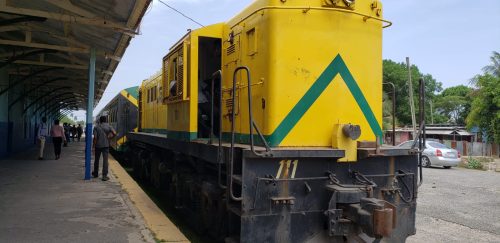Rail Service Over the Years
By: , August 30, 2022The Full Story
Jamaica’s railway system is one of the oldest in the world, with the first tracks laid in 1845, connecting Kingston to Angels in St. Catherine.
The proposal to construct the first railway line was made to the House of Assembly in Jamaica in 1843 by William Smith and his brother David Smith. Construction commenced in 1844 under the name, Railway Company, which was a private entity.
Over the years, the railway service played a vital role in providing passenger and freight services to the agricultural and mining sectors.
Some of the routes opened included Spanish Town to Old Harbour (1869), Old Harbour to Porus and Angels to Ewarton (1855), and Porus to Montego Bay (1894).
Other routes included Bog Walk to Port Antonio (1896), May Pen to Chapelton (1913), Linstead to New Works (1921), Chapelton to Frankfield (1925) and Logan’s Junction to Vernamfield in Clarendon (1941).
Ownership of the railway changed hands among private owners several times over the decades, until in 1960, just two years before the country achieved Independence on August 6, 1962, when the Government turned over the management of the railway to the newly established Jamaica Railway Corporation (JRC).

The JRC was established under the Jamaica Railway Corporation Act.
“The Government saw it necessary to establish a Railway Act, which gives the power to do whatever is necessary to operate a rail service, because the existing legislation at the time did not allow us to do that. Other than establish the Railway Act, it allows the Jamaica Railway Corporation to be a little more flexible in its operation,” Consultant Engineer at the JRC, Anthony Allen, tells JIS News.
When the JRC took control of the country’s rail network, the primary cargo of the trains was agricultural produce, before eventually transitioning to primarily transporting bauxite for local companies along various routes.
“With the advent of the bauxite companies, a much more lucrative revenue earner, the emphasis was really to move cargo for the bauxite company between Port Esquivel, May Pen to Williamsfield, Bodles through to Spanish town and up to Ewarton,” Mr. Allen informs.
In 1969, passenger traffic using trains along the now long and numerous routes across the country was more than one million per year. However, by 1973 an issue that has plagued the railway system since its origin re-emerged, that of operating capital.
According to ‘The History of Railroads/ways in Jamaica’, written by the National Library of Jamaica, by 1975 the financial crisis led to an inability to keep up with maintenance of trains and lines, and in 1974 the May Pen to Frankfield line closed, followed by the Bog Walk to Port Antonio line in 1975.
Public passenger service ceased operating in Jamaica in October 1992.
“It was basically an economic decision because passengers really cannot pay for the wear and tear of the railway and the maintenance of both the locomotives and the tracks and the infrastructure in general. So, passenger trains really have to be subsidised and over the years the issue became more and more… as the equipment aged, as the track aged, and, therefore, it proved to be very uneconomical to continue to move passengers,” Mr. Allen explains.
By April 2011, the service was restarted along the May Pen to Linstead route but was stopped again.
In 2022, trains made another comeback with the introduction of a pilot Student Passenger Rail Service to provide safe and cost-effective transportation to students from Old Harbour and Linstead to Spanish Town.
Six schools participated in the programme, where the trains carried more than 66 per cent of their capacity, transporting a combined total of 16,683 students on two round trips per day during the pilot.
For his part, Minister of Transport and Mining, Hon. Audley Shaw, says the Government is committed to getting the trains rolling again and is prepared to forge the necessary partnerships in the undertaking.
Speaking recently during a tour of the JRC terminus in West Kingston, Mr. Shaw noted that revival of islandwide rail service will take “several hundred millions of US dollars” and will include “putting in a new bridge to go to Spanish Town, and that alone is going to cost about US$8 million”.


